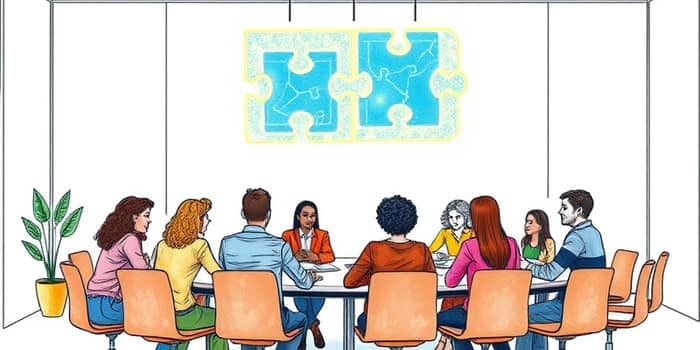Every organization relies on meetings to align teams, solve problems, and make critical decisions. Yet in 2025, a staggering 67% of meetings are unproductive and a mere 37% drive real decisions. To reclaim lost time and energy, leaders must transform agendas into engines of progress. This journey begins with intentional design, purposeful engagement, and disciplined follow-up.
By embracing a culture of structured agenda-driven conversations, organizations can flip the script on wasted hours and fragmented focus. The statistics are sobering: 50% of meetings start nearly 75 seconds late, and the average attendee loses concentration every 10 minutes. Clearly, there’s room for improvement—and opportunity for growth.
The Hidden Cost of Unstructured Meetings
When meetings lack a clear roadmap, conversations meander, decisions stall, and frustration mounts. In 2025, 64% of recurring sessions and 60% of one-off meetings lack any agenda. Without predefined objectives, teams drift off course, diverting valuable resources to tangential topics.
Consider this: an organization holding 30-minute meetings—which represent 45% of all sessions—may think they’re efficient by default. Yet without clear time framing, “time inflation” fills every slot, inflating a simple 15-minute update into a 30-minute drag. The result? A rise in average meeting length by 10% over the past 15 years, alongside growing dissatisfaction and fatigue.
Crafting Agendas That Drive Decisions
The antidote to meeting chaos is a well-designed agenda that maps discussion points directly to desired outcomes. Follow these best practices to shift from aimless chatting to action-packed alignment:
- Define clear goals and objectives for the session before sending invites
- Outline each discussion item with precise time limits
- Assign ownership: identify who leads and who supports each topic
- Share the agenda at least 24 hours in advance to allow pre-work
- Embed built-in interaction or brainstorming opportunities to boost participation
- Conclude with a summary of decisions, next steps, and deadlines
Meetings that adhere to this structure see a marked increase in decision rates, rising well above the current 37% baseline. Preparation is paramount: don’t let your team enter the room blindfolded.
Time Discipline: Respecting Every Minute
Precise time allocations for topics keep discussions focused and discourage tangents. By assigning specific durations to each agenda item, you signal to attendees that every minute matters.
This sample structure demonstrates how a 30-minute meeting can cover all essentials without overrunning. With clear boundaries, you maintain momentum and drive actionable meeting outcomes.
Engaging Every Participant
Passive attendance is a silent productivity killer. To keep energy high and minds focused, incorporate deliberate engagement triggers throughout your agenda.
- Rotate facilitation roles to distribute responsibility
- Include quick polls or dot-voting on priorities
- Set aside moments for rapid brainstorming in pairs or triads
- Solicit concise status updates, not open-ended monologues
Such tactics counteract the tendency to zone out after ten minutes. A well-timed interactive break can reignite focus and foster collaboration.
Accountability and Follow-Up
Even the most productive meeting falls flat without a follow-through plan. End each session by reviewing decisions, assigning task owners, and setting deadlines. This creates a clear link between discussion and implementation.
Documenting outcomes in a shared repository—such as a project management tool—ensures that no action item slips through the cracks. Teams that adopt this level of rigorous follow-up and tracking report higher satisfaction and lower recovery time post-meeting.
Transforming Meeting Culture for the Future
Looking ahead, hybrid and virtual gatherings will continue shaping organizational life. While 70% of professionals find virtual sessions less stressful, “Zoom fatigue” remains real, especially for introverts. Balancing screen time with in-person collaboration is key.
Moreover, cost scrutiny and resource optimization are driving leaders to question attendee lists and meeting frequency. With 66% of organizations planning more events in 2025, mastering agenda design becomes a competitive advantage.
By embedding these principles—structured agendas, strict time discipline, interactive engagement, and relentless accountability—companies can transform meetings from draining obligations into engines of growth. Ultimately, meeting mastery isn’t just about saving time; it’s about unleashing the full potential of every participant and converting every encounter into tangible, measurable progress.
Embrace these strategies today and watch your team’s collective energy shift from talk to tangible action. The meeting revolution starts with your next agenda.
References
- https://www.flowtrace.co/collaboration-blog/50-meeting-statistics
- https://www.notta.ai/en/blog/meeting-statistics
- https://www.meetingstoday.com/articles/145006/meetings-today-trends-survey-2025
- https://products.eventgroove.com/blog/articles/event-industry-statistics/
- https://www.flowtrace.co/collaboration-blog/state-of-meetings-report
- https://pmc.ncbi.nlm.nih.gov/articles/PMC9729359/
- https://blog.slido.com/meeting-preparation-tips/
- https://www.cvent.com/en/blog/events/event-statistics










